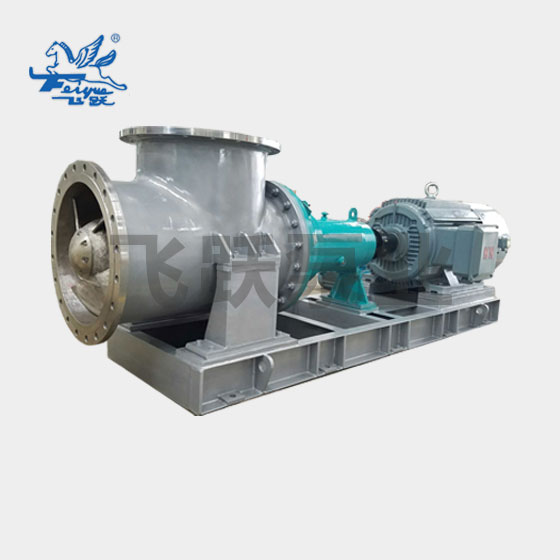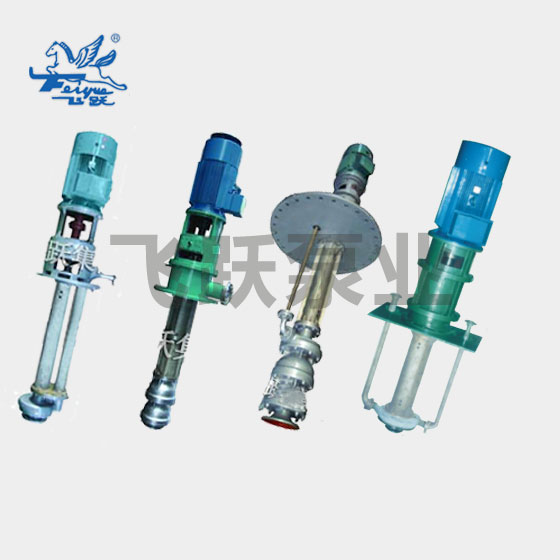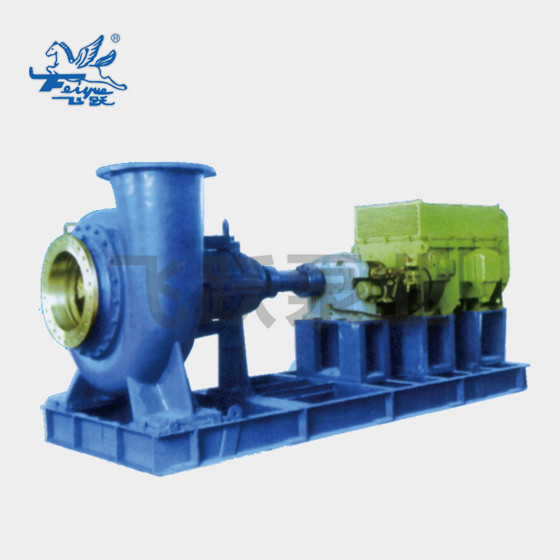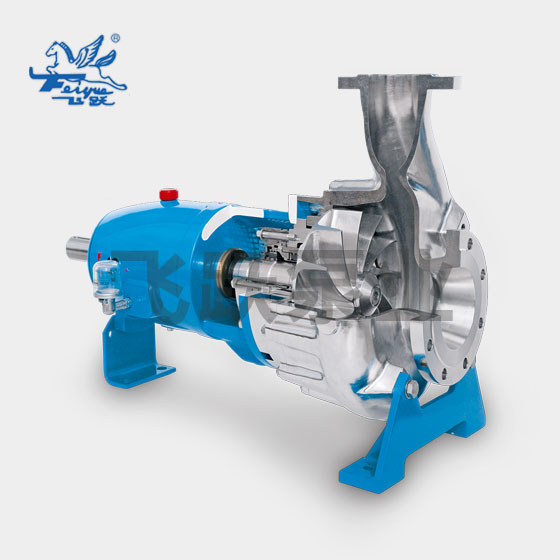The knowledge of pump
1. What is a pump?
A pump is a machine that transports or pressurizes liquid. It transfers the mechanical energy of the prime mover or other external energy to the liquid, increasing the liquid energy.
The pump is mainly used to transport liquids such as water, oil, acid-base liquid, emulsion, suspension emulsion, and liquid metal, as well as liquids, gas mixtures, and liquids containing suspended solids.
Pumps can usually be divided into three types: positive displacement pumps, power pumps and other types of pumps according to working principles. In addition to classification by working principle, it can also be classified and named by other methods. For example, according to the driving method, it can be divided into electric pumps and hydraulic pumps; according to the structure, it can be divided into single-stage pumps and multi-stage pumps; according to the purpose, it can be divided into boiler feed water pumps and metering pumps; according to the nature of the conveyed liquid, it can be divided into Water pump, oil pump and mud pump etc.
There is a certain interdependence change relationship between the various performance parameters of the pump, which can be drawn as a curve to represent, called the characteristic curve of the pump, each pump has its own specific characteristic curve.
Second, the definition and historical sources of the pump
Machinery that transports or pressurizes liquids. A pump in a broad sense is a machine that transports fluid or pressurizes it, including some machines that transport gas. The pump transfers the mechanical energy of the prime mover or other energy to the liquid to increase the energy of the liquid.
The improvement of water is very important for human life and production. There are various water-lifting appliances in ancient times, such as the chain pump in Egypt (17th century BC), the Chinese cassia tree (17th century BC), the pottery wheel (11th century BC), the waterwheel (1st century AD), and the 3rd century BC Spiral rods invented by Archimedes in ancient Greece. Around 200 BC, the ancient Greek craftsman Ketesbius invented the most primitive piston pump-fire pump. As early as 1588, there were records of four-vane sliding vane pumps, and various other rotary pumps appeared in succession. In 1689, D. Papan of France invented a 4-blade impeller volute centrifugal pump. In 1818, centrifugal pumps with radial straight blades, semi-open double suction impellers and volutes appeared in the United States. From 1840 to 1850, H.R. Worthington of the United States invented a piston pump with a direct acting steam between the pump cylinder and the steam cylinder, marking the formation of a modern piston pump. From 1851 to 1875, multi-stage centrifugal pumps with guide vanes were successively invented, making it possible to develop high-lift centrifugal pumps. Subsequently, various pumps came out one after another. With the application of various advanced technologies, the efficiency of pumps has gradually improved, and the scope of performance and applications have also gradually expanded.
3. Classification basis of pump
There are many types of pumps, which can be divided according to the working principle: ①Power pump, also known as impeller pump or vane pump, relies on the rotating impeller to the power of the liquid to continuously transfer energy to the liquid, so that the kinetic energy of the liquid ( Mainly) and pressure energy increase, and then convert the kinetic energy into pressure energy through the extrusion chamber, which can be divided into centrifugal pumps, axial flow pumps, partial flow pumps and vortex pumps. ②The positive displacement pump relies on the periodic change of the volume of the sealed working space containing the liquid to periodically transfer the energy to the liquid, so that the pressure of the liquid is increased to force the liquid to be discharged. According to the movement form of the working element, it can be divided into reciprocating pumps And rotary pumps. ③ Other types of pumps transfer energy in other forms. For example, the jet pump relies on the high-speed jet of working fluid to suck the fluid to be pumped and mix it, and exchange momentum to transfer energy; the water hammer pump uses part of the water in the flow when braking to be raised to a certain height to transfer energy; the electromagnetic pump is to make The energized liquid metal generates flow under the action of electromagnetic force to achieve transportation. In addition, pumps can also be classified according to the nature of the liquid to be transported, driving method, structure, use, etc.
Fourth, the application of pumps in various fields
From the performance range of the pump, the flow rate of the giant pump can reach more than hundreds of thousands of cubic meters per hour, while the flow rate of the micro pump is less than tens of milliliters per hour; the pressure of the pump can be from normal pressure to as high as 19.61Mpa (200kgf/ cm2) or higher; the temperature of the liquid to be transported is at least below -200 degrees Celsius, and the highest can reach above 800 degrees Celsius. There are many types of liquids pumped, such as water (clean water, sewage, etc.), oil, acid and alkali liquid, suspension, and liquid metals.
In the production of the chemical and petroleum sectors, raw materials, semi-finished products and finished products are mostly liquids, and the conversion of raw materials into semi-finished products and finished products requires a complex process. The pumps play the role of transporting liquids and providing pressure and flow of chemical reactions in these processes. In addition, in many devices, pumps are used to adjust the temperature.
In agricultural production, the pump is the main irrigation and drainage machinery. my country's rural areas are vast in size, and a large number of pumps are needed in rural areas every year. Generally speaking, agricultural pumps account for more than half of the total pump output.
In the mining and metallurgical industries, pumps are also the most used equipment. Mine needs to use pump to drain water. In the process of beneficiation, smelting and rolling, pump is needed to supply water first.
In the power sector, nuclear power plants require nuclear main pumps, secondary pumps, tertiary pumps, and thermal power plants require a large number of boiler feed pumps, condensate pumps, circulating water pumps, and ash pumps.
In national defense construction, pumps are needed for the adjustment of aircraft flaps, rudder and landing gear, the rotation of warships and tank turrets, and the submarine's ups and downs. High-pressure and radioactive liquids, some require pumps without any leakage, etc.
In the shipbuilding industry, there are generally more than 100 pumps used on each ocean-going ship, and their types are also various. Others such as water supply and drainage in cities, water for steam locomotives, lubrication and cooling in machine tools, bleaching and dyeing in the textile industry, pulp in the paper industry, and milk and sugar in the food industry all require large amounts of Pump.
In short, whether it is an aircraft, rocket, tank, submarine, or drilling, mining, train, ship, or daily life, pumps are needed everywhere, and pumps are running everywhere. This is exactly why the pump is classified as a general-purpose machine, which is a major product in the machinery industry.
V. Basic parameters of the pump
The basic parameters that characterize the main performance of the pump are as follows:
1. Flow Q
Flow rate is the amount of liquid (volume or mass) delivered by the pump in a unit of time.
The volume flow is represented by Q, and the unit is: m3/s, m3/h, l/s, etc.
The mass flow rate is expressed by Qm, and the unit is: t/h, kg/s, etc.
The relationship between mass flow and volume flow is:
Qm=ρQ
In the formula ρ——Density of liquid (kg/m3, t/m3), normal temperature clean water ρ=1000kg/m3.
2. Head H
The head is the increase in energy per unit weight of the pumped liquid from the pump inlet (pump inlet flange) to the pump outlet (pump outlet flange). That is, the effective energy obtained by a Newtonian liquid through the pump. The unit is N·m/N=m, that is, the height of the liquid column for pumping liquid, which is customarily referred to as meters.
3, speed n
The speed is the number of revolutions of the pump shaft per unit time. It is represented by the symbol n and the unit is r/min.
4. Cavitation allowance NPSH
The cavitation surplus is also called the net positive suction head, which is the main parameter indicating the cavitation performance. The cavitation surplus was once expressed in China by Δh.
5. Power and efficiency
The power of the pump usually refers to the input power, that is, the power on the shaft of the transfer pump of the prime mover, so it is also called the shaft power, and is represented by P;
The effective power of the pump is also called output power, which is expressed by Pe. It is the effective energy obtained in the pump by the liquid delivered from the pump per unit time.
Because the head refers to the effective energy obtained from the pump per unit of heavy liquid output by the pump, the product of the head and the mass flow rate and the acceleration of gravity is the effective energy obtained from the liquid output from the pump per unit time-that is, the pump Effective power:
Pe=ρgQH(W)=γQH(W)
In the formula ρ——Density of liquid conveyed by pump (kg/m3);
γ——The gravity of the liquid delivered by the pump (N/m3);
Q——Flow of pump (m3/s);
H——Pump head (m);
g——gravity acceleration (m/s2).
The difference between the shaft power P and the effective power Pe is the power loss in the pump, and its magnitude is measured by the efficiency of the pump. The efficiency of the pump is the ratio of effective power to shaft power, expressed by η.
6. What is flow? What letters are used? How to convert?
The volume of liquid discharged by the pump per unit time is called the flow rate, and the flow rate is expressed by Q. The unit of measurement is cubic meter/hour (m3/h), liter/second (l/s), L/s=3.6 m3/h=0.06 m3/ min=60L/min
G=Qρ G is weight ρ is liquid specific gravity
Example: A pump has a flow rate of 50 m3/h, and what is the weight per hour when pumping? The specific gravity ρ of water is 1000 kg/m3.
Solution: G=Qρ=50×1000(m3/h·kg/ m3)=50000kg / h=50t/h
7. What is lift? What letters are used? What unit of measurement is used? What is pressure conversion and formula?
The energy obtained by pumping liquid per unit weight is called the head. The pump head, including the suction head, is approximately the pressure difference between the pump outlet and inlet. The head is represented by H, and the unit is meter (m). The pressure of the pump is expressed by P, the unit is Mpa (Mpa), H=P/ρ. If P is 1kg/cm2, then H=(lkg/cm2)/(1000kg/m3) H=(1kg/cm2)/ (1000kg/m3)=(10000kg/m2)/1000kg/m3=10m
1Mpa=10kg/cm2, H=(P2-P1)/ρ (P2=outlet pressure P1=inlet pressure)
8. What is cavitation allowance? What is suction? Does the respective unit of measurement represent letters?
When the pump is working, the liquid will generate a vapor at the inlet of the impeller due to a certain vacuum pressure. Under the impact of the liquid particles, the vaporized bubbles will ablate the surface of the metal such as the impeller, thereby destroying the metal such as the impeller. At this time, the vacuum pressure is called Vaporization pressure, cavitation surplus refers to the excess energy per unit weight of liquid at the suction port of the pump that exceeds the vaporization pressure. Units are marked with meters and (NPSH) r. The suction stroke is the necessary cavitation surplus Δh: the vacuum degree that the pump is allowed to suck liquid, that is, the allowable installation height of the pump, in meters.
Suction range = standard atmospheric pressure (10.33 meters)-cavitation surplus-safe amount (0.5 meters)
The standard atmospheric pressure can press the pipeline vacuum height of 10.33 meters.
For example: The necessary cavitation surplus of a pump is 4.0 meters. What is the suction stroke Δh?
Solution: Δh=10.33-4.0-0.5=5.83 meters
Nine, what is the cavitation phenomenon of the pump and its causes
1. Cavitation
At a certain temperature, when the pressure is reduced to the vaporization pressure at that temperature, the liquid will generate bubbles. This phenomenon of generating bubbles is called cavitation.
2. Cavitation collapse
When the bubbles generated during cavitation flow to high pressure, the volume of the bubbles is reduced and they are destroyed. This phenomenon of bubbles disappearing into the liquid due to pressure rise is called cavitation collapse.
3. The causes and hazards of cavitation
When the pump is running, if the partial area of its overflow part (usually somewhere behind the impeller blade inlet) is for some reason, when the absolute pressure of the pumped liquid drops to the vaporization pressure of the liquid at the current temperature, the liquid is in the At the beginning, it began to vaporize, generating a large amount of steam and forming bubbles. When the liquid containing a large number of bubbles passed through the high-pressure area in the impeller, the high-pressure liquid around the bubbles caused the bubbles to shrink sharply and burst. While the bubbles are condensing and breaking, the liquid particles fill the cavities at a very high speed, generating a strong water hammer effect at this instant, and striking the metal surface with a high impact frequency. The impact stress can reach hundreds to thousands of atmospheres. The impact frequency can reach tens of thousands of times per second. In severe cases, the wall thickness will break down.
4. Cavitation process
The process of generating bubbles and bursting bubbles in the water pump and damaging the overcurrent parts is the cavitation process in the water pump. In addition to damaging the flow parts, the pump will cause noise and vibration, and cause the performance of the pump to deteriorate. In severe cases, the liquid in the pump will be interrupted and it will not work properly.
10. What is the characteristic curve of the pump?
The curve representing the relationship between the main performance parameters is usually called the performance curve or characteristic curve of the centrifugal pump. In essence, the performance curve of the centrifugal pump is the external manifestation of the movement law of the liquid in the pump, which is obtained through actual measurement. The characteristic curves include: flow-head curve (QH), flow-efficiency curve (Q-η), flow-power curve (QN), flow-cavitation surplus curve (Q-(NPSH)r), and the performance curve is At any flow point of the pump, a set of relative head, power, efficiency and cavitation margin values can be found on the curve. This group of parameters is called the working state, referred to as the working condition or working point, centrifugal pump The working condition of the highest efficiency point is called the best working condition point, and the best working condition point is generally the design working condition point. In general, the rated parameters of the centrifugal pump, that is, the design operating point and the optimal operating point coincide or are very close. It is important to know the performance parameters of the pump to run in the selected efficiency interval in practice, that is, to save energy and to ensure the normal operation of the pump.
11. What is the efficiency of the pump? What is the formula?
Refers to the ratio of the effective power of the pump to the shaft power. η=Pe/P
The power of the pump usually refers to the input power, that is, the power transferred from the prime mover to the pump shaft, so it is also called the shaft power and is represented by P.
The effective power is: the product of the pump's head and mass flow and the acceleration of gravity.
Pe=ρg QH (W) or Pe=γQH/1000 (KW)
ρ: density of liquid transported by pump (kg/m3)
γ: the gravity of the liquid transported by the pump γ=ρg (N/m3)
g: acceleration of gravity (m/s)
Mass flow Qm=ρQ (t/h or kg/s)
12. What is the full performance test bench for pumps?
The equipment that can accurately test all performance parameters of the pump through precision instruments is a full-performance test bench. National standard accuracy is class B. The flow rate is measured with a precision worm gear flowmeter, and the head is measured with a precision pressure gauge. The suction range is measured with a precision vacuum meter. The power is measured with a precision shaft power machine. The speed is measured with a tachometer. The efficiency is calculated based on the measured value: n=rQ102.








